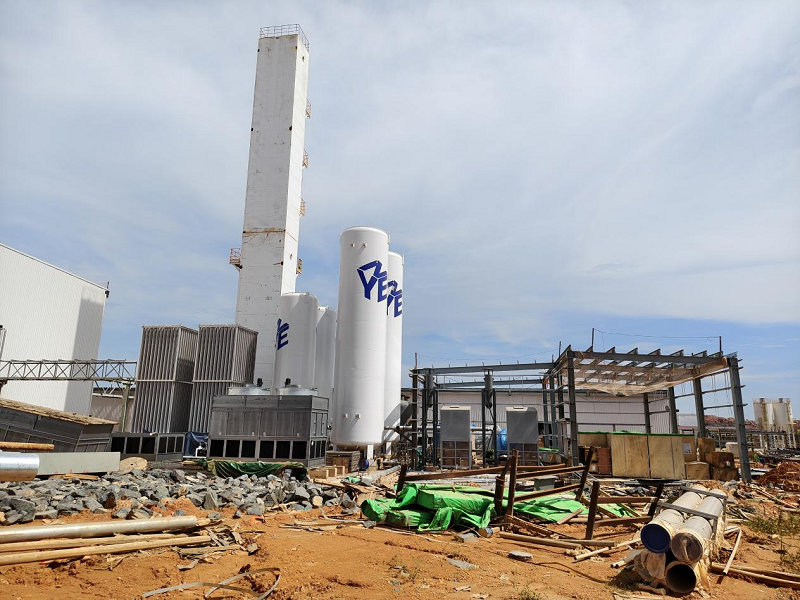High-purity oxygen is widely used in medical, industrial, and scientific research fields. The continuous development of its production technology has led to higher requirements for the purity and production efficiency of oxygen. This article will introduce several common methods for producing high-purity oxygen, analyzing their working principles, advantages and disadvantages, and applicable scenarios.
1. Air Separation Method
The air separation method is one of the most widely used ways for producing high-purity oxygen. Its core principle is to separate different components in the air at different boiling points through cryogenic cooling technology.
1.1 Deep Cold Air Separation Method
The deep cold air separation method is a mature industrial oxygen production technology. This method utilizes the differences in boiling points of various components in air under different pressures and temperatures. Through multiple stages of compression, cooling, and liquefaction, oxygen, nitrogen, and other gases are separated from the air. The deep cold air separation device uses multiple-stage distillation towers to ultimately obtain high-purity oxygen with a purity of over 99.5%.
The advantages of the deep cold air separation method are that it can produce high-purity oxygen on a large scale and continuously, and is suitable for industrial applications with high demand for oxygen, such as steel smelting and chemical processes. Its disadvantages are that the initial investment is large, energy consumption is high, and the equipment maintenance and operation requirements are high.
1.2 Compression-Expansion Separation Method
The compression-expansion separation method is an improvement of the deep cold air separation method. By compressing the air and rapidly expanding it, the air is cooled and oxygen and other components are separated. This method can also achieve a high purity of oxygen, but compared to the traditional deep cold air separation, its equipment volume is smaller and is suitable for small-scale oxygen production needs.
2. Pressure Swing Adsorption Method (PSA)
Pressure Swing Adsorption (PSA) is a commonly used method for industrial production of high-purity oxygen. The principle of PSA is to utilize the selective adsorption characteristics of adsorbents (such as zeolite molecular sieves) for nitrogen and oxygen in the air. Under different pressures, nitrogen is adsorbed and desorbed respectively, thereby obtaining high-purity oxygen.
The advantages of PSA method are that its equipment is simple, startup is fast, and operating costs are low. It does not require a complex cooling process, and is therefore widely used in small-scale oxygen production equipment. The purity of oxygen produced by PSA method is usually between 90% and 95%, but through appropriate improvements, the purity can be further increased to over 99%.
However, the disadvantages of the PSA method are that itoxygen production and purity are limited by the performance of the adsorbent, and the efficiency of the system is affected by the aging of the adsorbent. Therefore, this method is more suitable for enterprises or medical institutions with smaller oxygen demand.
We are manufacturer and exporter of air separation unit. If you want to know more about us:
Contact person:Anna
Tel./Whatsapp/Wechat:+86-18758589723
Email :anna.chou@hznuzhuo.com
Post time: Oct-13-2025
 Phone:
+86-18069835230
Phone:
+86-18069835230 E-mail:lyan.ji@hznuzhuo.com
E-mail:lyan.ji@hznuzhuo.com







